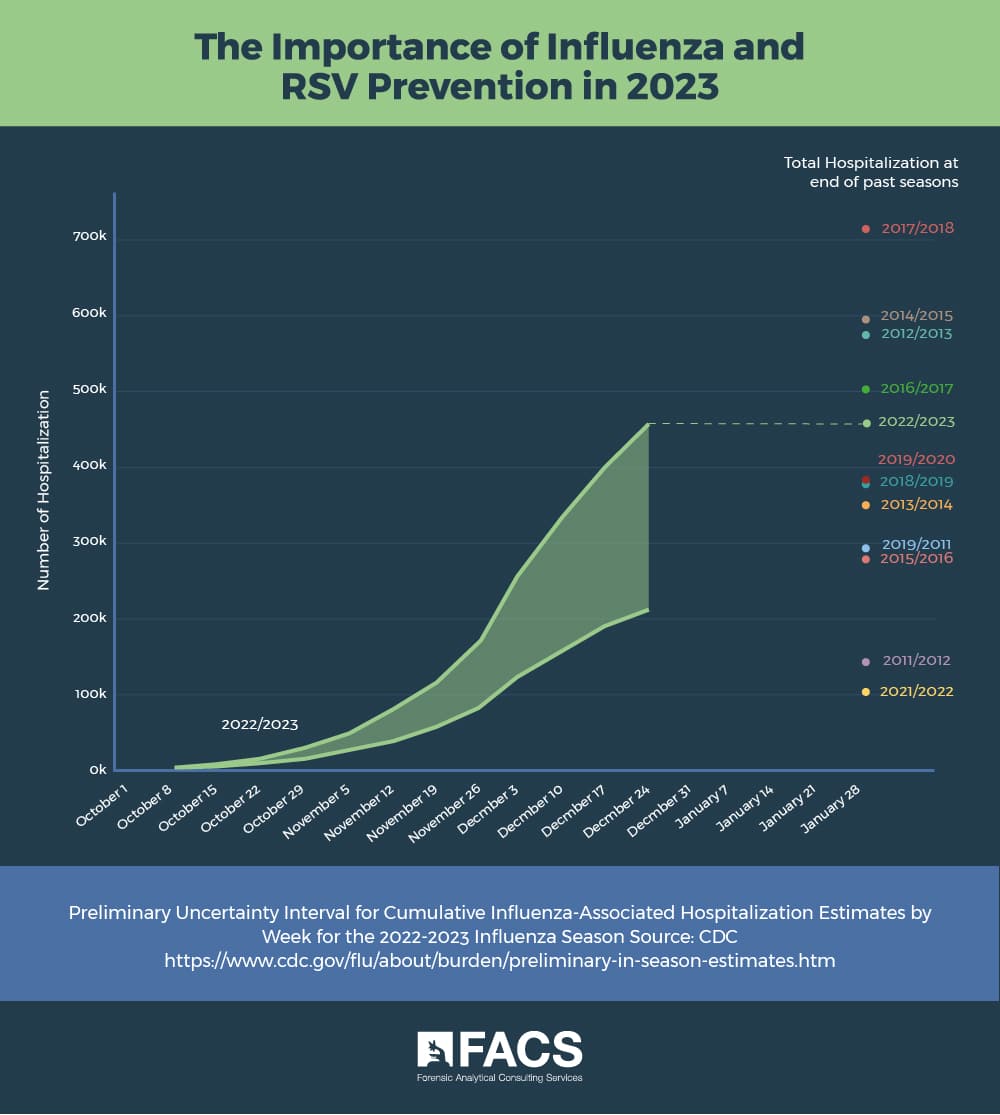Don’t let your guard down quite yet. Not only is COVID still a threat to your health, cases of influenza and RSV (respiratory syncytial virus) are hospitalizing people at abnormally high rates. Those three — COVID, influenza, and RSV — are often collectively termed a “tripledemic.”
We’ve written extensively about COVID in previous articles. Here, we’ll address frequently asked questions about influenza and RSV. Our aim is to provide information you can use to help keep yourself, your family, and your employees or co-workers healthy and productive this winter.

What Is the Difference Between Flu and RSV?
Flu (influenza) and RSV are both contagious viral infections that affect the respiratory system. Flu symptoms tend to be more severe than those of RSV, but the fever, cough, sore muscles, runny nose, and other signs of influenza can also be associated with an RSV infection. Only a laboratory test can determine whether a person has contracted the flu, RSV, or COVID — and it is entirely possible for a person to be afflicted by all three at the same time. Viruses tend to infect more people during the winter months than at any other time of the year, but are a year-round threat to health.
Are Certain Age Groups More At Risk for influenza and RSV?
The Centers for Disease Control (CDC) estimates that deaths from the flu alone could reach 28,000 in 2022. RSV normally leads to up to 10,000 deaths annually, but is of special concern this year. Age is a primary factor. Children under age five and adults over 65 are especially prone to get severely ill when afflicted by flu or RSV.
How Are the Flu and RSV Viruses Transmitted?
Both flu and RSV are typically spread by coughs, sneezes, and by direct contact with a surface contaminated by one or both of the viruses. You might pick an item up from the shelf at the store using bare hands, for instance, then later rub your eyes, thereby providing the virus access to your body. Both viruses can survive on a hard surface for hours or even days. Influenza is the hardiest of the two.
How Can I Avoid Getting Sick With Flu or RSV?
Flu and RSV infection rates declined significantly during the first two years of the COVID pandemic. That drop is generally attributed to the precautions taken to avoid COVID: handwashing, social distancing, increased attention to surface cleanliness, and covering the mouth and nose. With concerns about COVID now more relaxed, flu and RSV have returned in force.
The FACS recommendation is simple, although it may not be the solution many people want to hear: Continue practicing the same preventative measures you adopted to avoid a COVID infection. Be careful about what you touch with bare hands, wash your hands frequently, avoid being near people who are coughing and sneezing, be extra careful about surface contamination, and limit your exposure time during social activities. We also urge you to ask your physician what vaccinations are available for the flu and COVID. Don’t let your guard down. Stay vigilant and stay well.